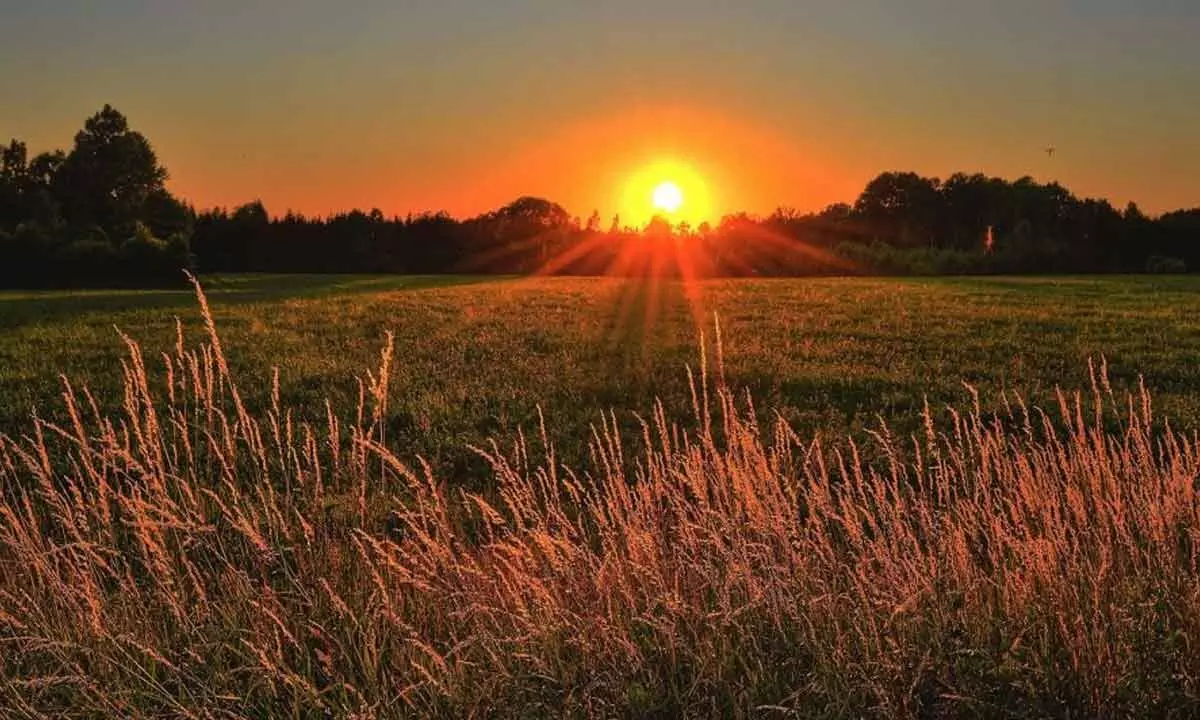Live
- Almonds are a key to faster muscle recovery after exercise: Study
- No govt faced so much criticism than Revanth-led Cong in 11 months: Kavitha
- Balineni signed SECI agreement, says Chevireddy
- Infant kidnapped from Niloufer Hospital rescued, cops arrest 3
- Sunny Leone reflects on challenges and preparations for ‘Shero’
- Hyderabad Saree Festival 2024 kicks off in a grand manner
- Speed up Veligonda project works, CPM urges govt
- 10 career opportunities with a public policy degree
- TG Medical Council cracks whip on fake doctors
- TTD takes up mammoth waste management exercise
Just In
What is Golden hour, why it is popular among photographers?


What is Golden hour, why it is popular among photographers?
- When the sun is close to the horizon on a sunny day, it light appears warmer and softer, thus forming the golden hour.
- The golden hour is also known as the magical hour, this is mostly likely to happen when the sun is between 6 degrees below and 6 degrees above the horizon.
When the sun is close to the horizon on a sunny day, its light appears warmer as well as softer, thus makes the golden hour, it is also known as the magical hour, popular with photographers as well as filmmakers.
The warm sunlight that is the characteristic for the golden hour, most likely occur when the sun is between 6 degrees below and 6 degrees above the horizon.
Why is the light Golden?
When the sun is just above the horizon, its rays impact the Earth at a low angle and they tend to travel through more of the Earth's atmosphere before they reach us. On their way to the Earth's surface, they tend to encounter atmospheric particles such as dust and water droplets, which filter the sunlight, ultimately making it less bright. This process also adds more indirect light to the mix softening contour and reducing the contrast.
At the same time, we find thicker layer of atmosphere that the sunlight has to pass through the scatters the blue as well as violent wavelengths. Allowing more light in the orange as well as red spectrum to reach Earth. This scattering decreases the sunlight's color temperature and it makes it take on a golden or reddish hue.
Twilight colors
During civil twilight, when the Sun is at most 6 degrees below the horizon, Earth's upper atmosphere reflects the sunlight, illuminating the lower atmosphere and making the sky appear in golden as well as reddish colors.
While this period is commonly included in the definition of the Golden hour, it produces a lighting effect, which is very different from the direct morning or evening sunlight, it also requires photographers to work with different camera settings.
Does the Golden hour last for more than 60 minutes?
The duration of the golden hour depends on both the latitude as well as season. In locations, where the sun is directly overhead at noon- for example at the equator, during the equinoxes-the sun traverses the horizon at an angle of 90 degrees, making for swift transition between night and day and relatively short golden hour. For example, in Quito, Ecuador, which is very close to the equator, it takes the sun only about 50 minutes to move from 6 degrees below the horizon to 6 degrees above it.
At higher latitude, the similar process takes longer. At around 40 degrees north and south, for example in New York and Wellington, it takes around 1 hour in March in Osto(about 60 degrees north0 and the northernmost tip of Antarctica (About 60 degrees south) the golden hour lasts more than 90 minutes at that time of the year.
With the polar circles and just outside them, the Sun does not sink lower than 6 degrees below the horizon during the summer. So the golden can last all night, close to the poles and when it comes to equinoxes, it can last for several weeks, when the sun's zenith slowly passes to the equator and the polar night gives way to the Midnight sun.
Golden hour photography tips
The Golden hour is a great time to shoot any kind of picture, which include portraits, landscapes, cityscapes and still life. To capture the magic of the golden hour in your photos, one should try following these guidelines.
Plan Ahead: The golden hour is short, or too short when you are setting the camera to get the picture perfect, when the light is just right. Time timeand date.com's Sun calculator, to find out, when the sun would be the right angle at your shooting location ( you can click on a row in the table for a solar elevation graph). You must get yourself familiar with destination and turn up with few ideas on the subjects and angles you wish to capture.
-Play Around- You must experiment with front lighting, backlighting, rim lighting and perhaps, you can catch a flare as the warm sunlight enters your lens.
Use a wild aperture: the sunlight is not as bright during the golden hour, it requires larger aperture-unless you are planning for long exposure shot
-Try increasing the ISO setting: The low light level during the golden hour might require to try out a higher ISO setting. However, be aware that, this might also increase noise.
-Use a tripod: When experimenting with a range of apertures, a tripod would help you keep your images sharp.

© 2024 Hyderabad Media House Limited/The Hans India. All rights reserved. Powered by hocalwire.com






